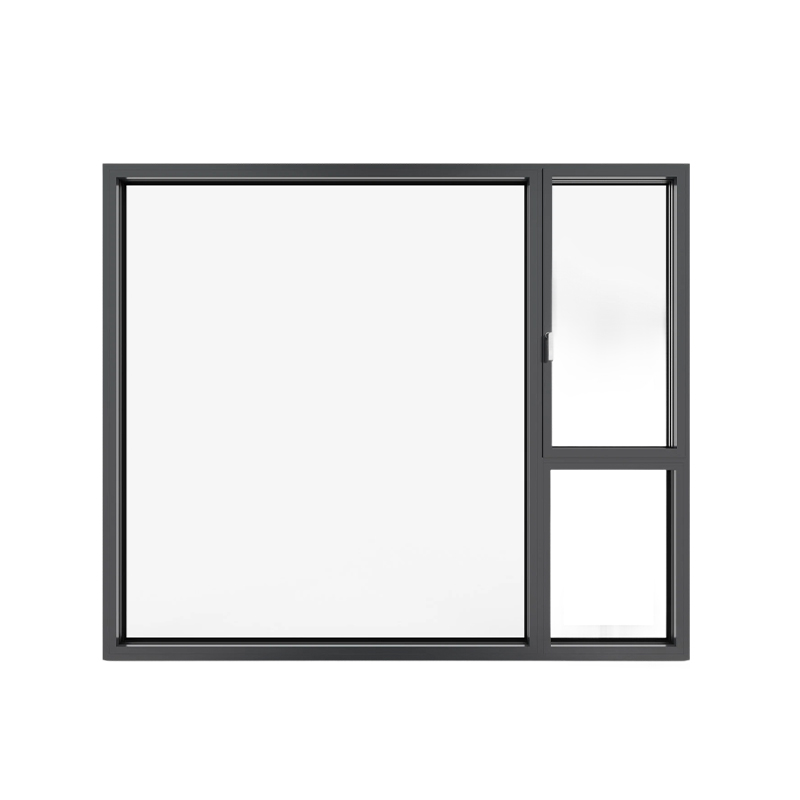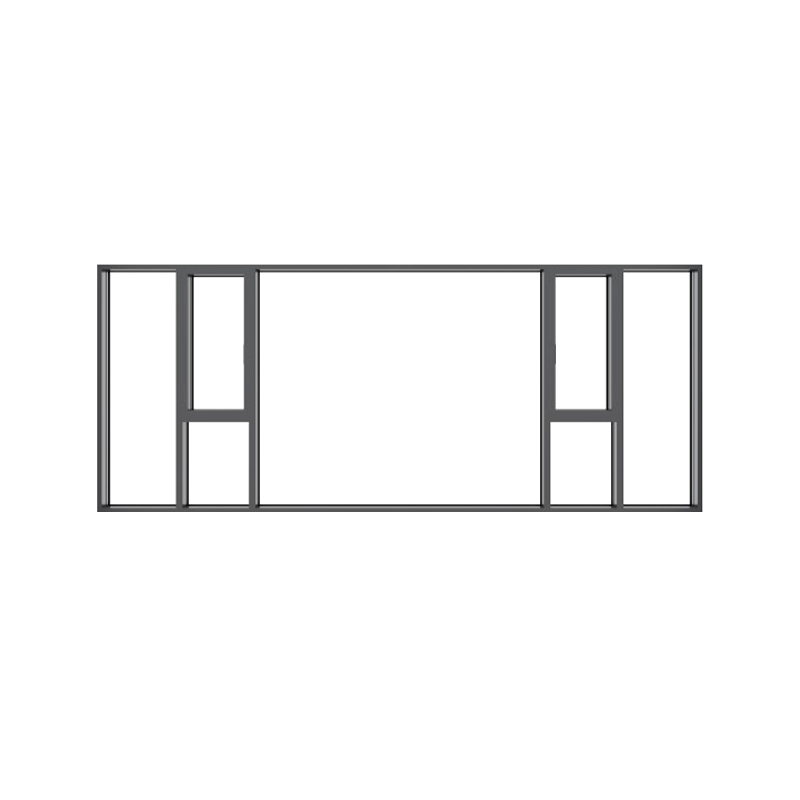What are the differences in corrosion resistance of aluminum alloy system doors and windows due to different surface treatment processes?
Release Time : 2025-11-20
The corrosion resistance of aluminum alloy system doors and windows is one of their core performance indicators, directly affecting their service life and safety. Different surface treatment processes alter the material's surface structure or chemical composition to form a protective layer against environmental corrosion, and their protective effects vary significantly due to differences in process principles. The following analysis focuses on the protective mechanisms, performance characteristics, and applicable scenarios of mainstream processes.
Anodizing is one of the most basic surface treatment processes for aluminum alloy system doors and windows. This process generates a dense alumina film on the metal surface through an electrolytic reaction, with the film thickness typically controlled between 5-20 micrometers. Its protective principle lies in the fact that the porous structure of the oxide film can adsorb sealing agents, forming a physical barrier layer that effectively blocks the penetration of corrosive media such as chloride ions and moisture. Anodized aluminum alloy system doors and windows maintain good stability in high-humidity coastal environments, but it should be noted that insufficient film thickness may lead to localized pitting corrosion with long-term exposure.
Electrophoretic coating uses an electric field to directionally deposit charged paint particles onto the aluminum alloy surface, forming a uniform coating. The protective advantages of this process lie in the strong adhesion between the coating and the substrate, and the chemical inertness of the coating itself, which can resist complex corrosive environments such as acid rain and salt spray. Compared with anodizing, electrophoretic coating has better weather resistance, especially suitable for areas with drastic temperature changes. However, the coating thickness must be strictly controlled within the range of 20-30 micrometers; too thin a coating can easily lead to protective failure, while too thick a coating may cause cracking.
Powder coating uses the principle of electrostatic adsorption to uniformly adhere powder coating to the aluminum alloy surface, forming a dense coating after high-temperature curing. Its protective mechanism relies on the physical shielding effect of the coating, which can effectively isolate corrosive factors such as oxygen and moisture. The outstanding advantages of this process are the rich selection of colors and the coating hardness reaching 6H, with excellent scratch resistance. In areas with severe industrial pollution or frequent dust storms, powder-coated aluminum alloy system doors and windows can maintain long-term protective effects through regular cleaning and maintenance. However, it is necessary to repair any damage to the coating promptly to prevent the spread of localized corrosion. Fluorocarbon coating, as a high-end protective process, utilizes polyvinylidene fluoride (PVDF), its core component, which possesses extremely strong chemical stability. The resulting coating has a dense molecular structure, providing long-term resistance to UV radiation, ozone, and chemical solvents. In extreme corrosive environments such as nearshore areas or chemical industrial parks, fluorocarbon-coated aluminum alloy system doors and windows can have a protective lifespan of over 15 years, and its excellent self-cleaning properties reduce maintenance frequency. However, its high cost limits its application in large-scale civilian projects, making it more suitable for high-end buildings or special applications.
Wood grain transfer printing uses thermal transfer technology to penetrate wood grain patterns onto the aluminum alloy surface. Its protective system typically combines anodizing with a clear varnish coating. While meeting decorative requirements, this process provides basic protection through the clear varnish layer, but its overall corrosion resistance is weaker than dedicated protective processes. In dry inland areas, wood grain transfer-printed aluminum alloy system doors and windows can remain corrosion-free for 5-8 years, but in humid coastal environments, maintenance intervals need to be shortened.
The differences in protective performance among different processes stem from their mechanisms of action: anodizing relies on a chemical conversion film, electrophoresis and powder coating emphasize physical shielding, while fluorocarbon coating combines chemical inertness with physical densification. In practical applications, the process should be selected based on the environmental corrosion level: fluorocarbon coating is preferred in highly corrosive coastal areas, powder coating can be chosen in dry inland areas, and wood grain transfer is more suitable for scenarios where decorative requirements outweigh protective ones.
Improving the corrosion resistance of aluminum alloy system doors and windows requires balancing process cost and protective needs. By rationally selecting surface treatment processes, a balance between performance and economy can be achieved, providing a durable and reliable protective barrier for buildings. In the future, with the introduction of new technologies such as nano-coatings and graphene modification, the corrosion resistance of aluminum alloy system doors and windows will further overcome existing limitations.







